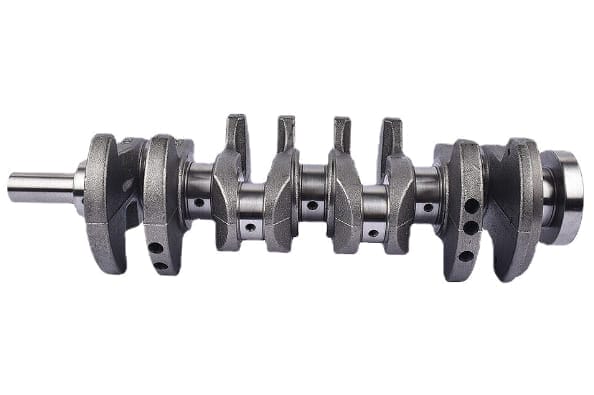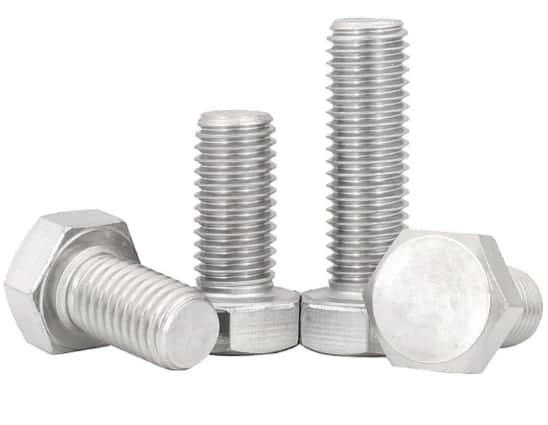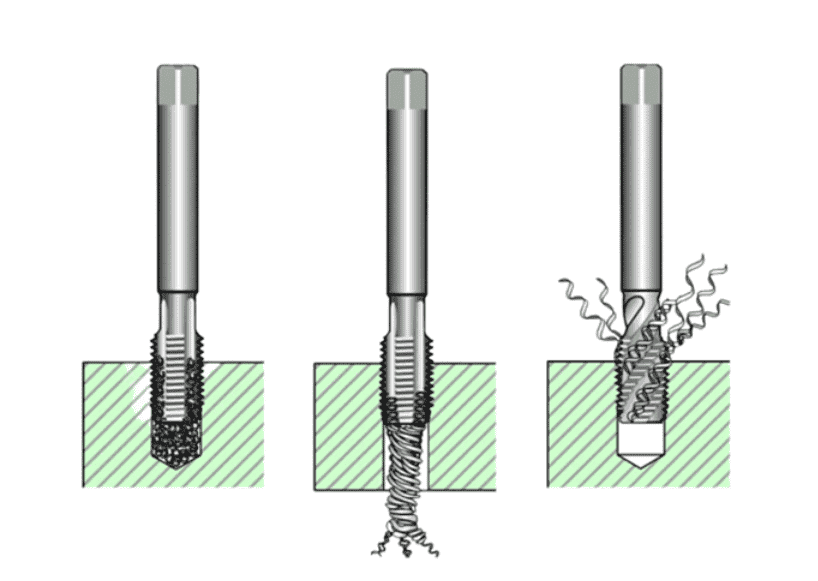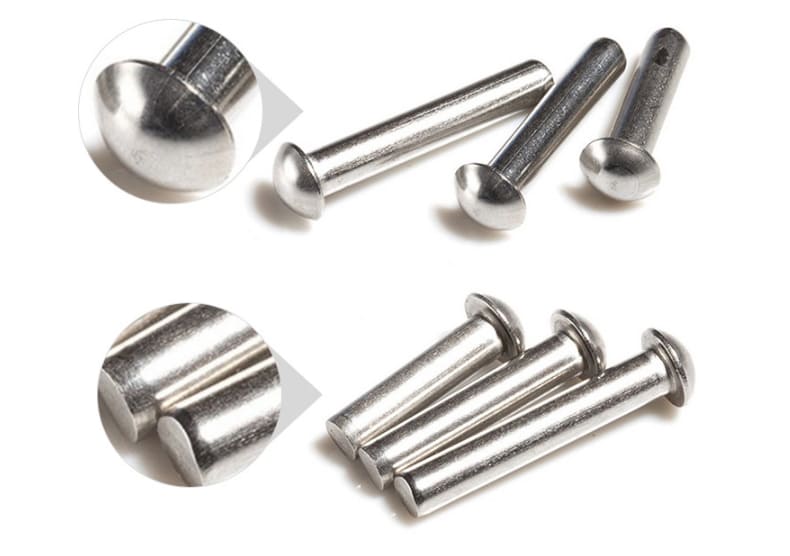If you’re a car enthusiast, you may have heard the term “crankshaft” being thrown around when talking about car engines. But what is a crankshaft exactly?
Well, it’s a mechanical part of your engine that plays an important role in converting reciprocating linear piston motion into rotation. Let’s take a closer look at how crankshafts work and why they are so important.
What is a Crankshaft?
A crankshaft is a rotating shaft in an internal combustion engine that converts linear motion from the pistons into rotary motion.
The crankshaft is typically connected to the flywheel, which helps to smooth out the engine’s power pulses and provides a more constant rotation speed. To achieve the precision required for machining components like crankshafts, many industries rely on an expert CNC turning service to ensure accuracy and durability in cylindrical parts.
The crankshaft’s position in the engine is crucial to the engine’s operation, and it is supported by bearings to ensure smooth and efficient rotation.
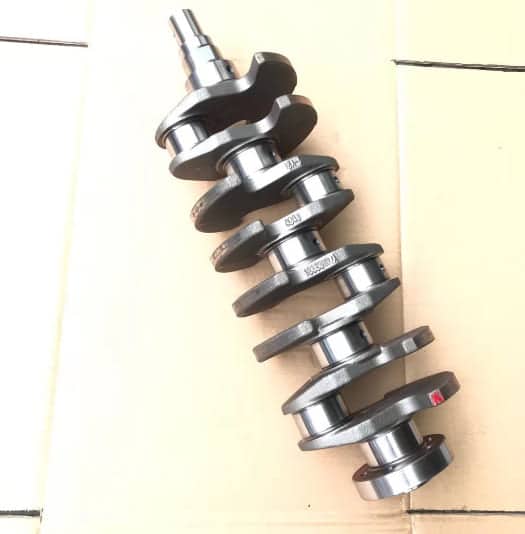
What Does a Crankshaft Do?
A crankshaft is responsible for transforming the force created by your engine’s pistons into rotational force. In other words, it transfers the energy created by the engine to the drivetrain of your vehicle. This is essential for making your vehicle move forward—without it; you wouldn’t be able to drive.
Crankshafts are typically made from forged steel or cast iron because both materials are strong and durable enough to withstand high levels of stress and pressure without breaking down easily.
The design of a crankshaft also includes several balancing weights located on each end of it that help reduce vibration caused by the combustion process in your engine.
In complex designs such as these, precision is key. At Yijin Hardware, we provide expert 3D design services to create accurate, high-performance components for all types of engines, ensuring maximum durability and functionality.
How Does a Crankshaft Work?
The main purpose of a crankshaft is to convert the reciprocating linear piston motion into rotational motion that can then be used to power the wheels of your car.
To do this, the crankshaft has cylindrical offset sections called journals and connecting rods that attach to each cylinder in your engine block.
As these cylinders fire up, they push against their respective connecting rods, which then transfer force onto the crankshaft causing it to spin rapidly. This spinning motion is then transferred via the transmission system to your vehicle’s drivetrain so it can move forward.
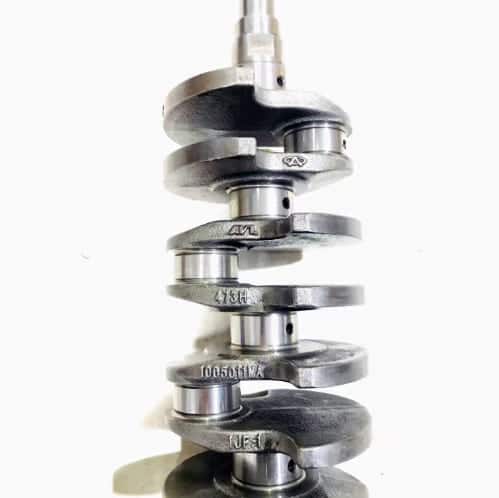
Different Parts of a Crankshaft
Let’s take a look at the individual parts that make up this important component.
Main Bearing Journal and Crankpin Journal
The main bearing journal is the surface that connects the crankshaft to the engine block. The crankpin journal is the surface that connects to the connecting rod.
These two journals are connected by a web or connecting rod journal, which helps provide strength and stability to the crankshaft as it rotates in its housing.
Crank Web and Counterweight
The crank web is located between each main bearing journal and crankpin journal and helps to support them as they rotate.
It also helps reduce vibration in the crankshaft for better performance. The counterweight is located on either end of the crank web and serves to balance out any imbalances caused by asymmetrical loads on either side of it.
Flywheel Flange
The flywheel flange is located at one end of the crankshaft and serves as a connection point for the flywheel, which itself connects to gears within the transmission system.
The flywheel helps keep the momentum going when starting up an engine or shifting gears while driving. Without a well-functioning flywheel flange, your car would stall every time you tried to accelerate or change speed.
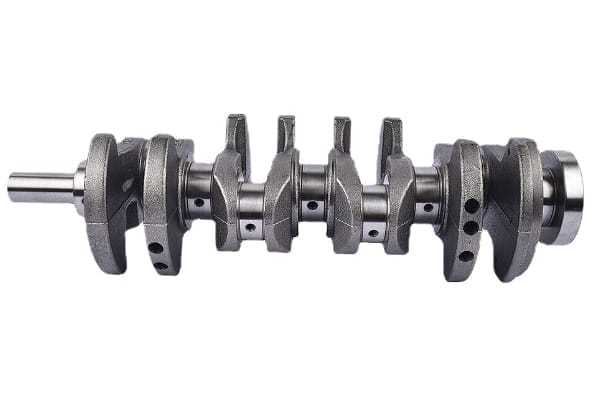
Different Types of Crankshafts
In this section, we will explain the different types of crankshafts used in vehicles today.
Single-Plane Crankshaft
The single-plane crankshaft is one of the most common types found in many vehicles today. This type of crankshaft consists of three rods connected at one end, which rotate around a central axis.
It is designed with a single crankpin that converts linear movement into rotational energy. This type of crankshaft produces even intervals between each firing stroke which helps provide smooth operation and efficient power delivery.
Multi-Plane Crankshaft
The multi-plane crankshaft is another popular type found in many engines today. This type has four or more rods connected at one end, which rotate around a central axis.
Unlike the single-plane crankshaft, this type has multiple crankpins, which allow it to convert linear motion into rotational energy faster than its single-plane counterpart.
This means higher revs per minute (RPM) and greater horsepower output for better performance on modern vehicles.
Twin-Camshaft Crank-Shaft
The twin-camshaft crankshaft is a unique design that combines two camshafts and a single main crankshaft into one unit.
This design allows for both camshafts to be driven by the same main shaft, resulting in improved efficiency compared to other types of designs.
However, this type of crankshaft is more complex and difficult to maintain due to its intricate nature, so it’s not commonly found in most vehicles today.
Types of Crankshafts in Marine Engine
There are four main types of crankshafts used in marine engines today, each with its own advantages and disadvantages. Let’s take a look at each one.

Fully Built Shaft
This type of crankshaft is built from several different components that are designed to work together as a unit. The components are connected using pins and keys that hold them together securely.
This type of shaft is best suited for high-performance engines because it can handle higher loads without failure. It also requires minimal maintenance and can last for many years with proper care.
Semi Built Shaft
This type of shaft utilizes some components from the fully built model but does not have all of the pieces connected together as one unit. Instead, each component has its own bearing surface, which allows them to be adjusted independently from each other if needed.
This makes the semi-built shaft a great choice for smaller engines, as it offers more flexibility when it comes to adjustments and maintenance.
However, it is not as durable as a fully built shaft, so it may need replacing sooner than expected if not properly maintained or operated under extreme conditions.
Welded Crankshaft
As the name implies, this type of shaft is made by welding multiple parts together into one piece using high-temperature heat and pressure applied by specialized machinery.
While this method is often used in larger engines due to its superior strength and durability compared to other types, it can be expensive due to the costs associated with welding equipment and materials required for the job.
Single Solid Piece
This type of crankshaft is machined out of one solid piece of metal or alloy and offers superior strength compared to other types since there is no welding involved during assembly.
This makes it ideal for large displacement applications as well as those requiring higher power outputs, such as racing engines where reliability under extreme conditions is essential.
However, this type can also be expensive due to the cost associated with machine tooling necessary for production purposes, along with material costs associated with high-grade metals or alloys used in construction.
Applications of Crankshaft
In this section, we’ll discuss three applications of the crankshaft to give you a better understanding of just how versatile this part really is.
Automobiles
One of the most widely-known applications of the crankshaft is its use in automobile engines. In an internal combustion engine, the crankshaft acts as a link between the pistons and the drive wheels.
As fuel is burned in the engine’s cylinders, it forces the pistons to move up and down; this motion is then transferred to the crankshaft, which converts it into rotation and sends it to the drive wheels via an axle or shaft.

Industrial Machinery
Crankshafts are also used in many types of industrial machinery, such as pumps, compressors, grinders, and more. They are designed to convert rotational energy into linear force or torque for powering various tools or machines.
This makes them ideal for heavy-duty tasks that require powerful motors and precise control over speed and torque output. For example, they can be used to power saws and drills for cutting metal or stone with accuracy and efficiency.
Boats
Crankshafts are found in boats as well! While traditional boats rely on propellers for propulsion through water, some modern boats are powered by engines that use crankshafts instead.
These engines produce much higher levels of power than propeller-driven propulsion systems—allowing for faster speeds over longer distances—and offer greater fuel efficiency than traditional boat engines as well.
Can Your Company Offer A customized Crankshaft?
YIJIN Hardware specializes in providing parts processing, with high-quality product quality, perfect after-sales service, a fast quotation system, preferential price, and a fast delivery method, based on the world market.
The automobile crankshaft produced by our company is cast with alloy steel material, which has a good appearance and high density. After finishing, the finish is brighter and more durable. Each product has undergone strict testing, and each crankshaft has rounded corners and rounding technology, so the quality is more assured.
Conclusion
A crankshaft is made up of several different components that all work together to convert rotational energy into linear motion in order for an engine to run efficiently and smoothly.
By understanding each part of a crankshaft – from main bearing journals, crankpins, webs, counterweights, and flywheel flanges – we can gain better insight into how our cars work and become better informed about automobile maintenance.
Knowing more about our vehicles will help us save time and money when it comes time for repairs or replacements.
Whether you’re looking for an efficient way to power your car or boat engine or need a reliable motor for your industrial operations, a crankshaft could be exactly what you need. So, it was all about the crankshaft.

 info@yijinsolution.com
info@yijinsolution.com (+86) 188-2253-7569
(+86) 188-2253-7569
